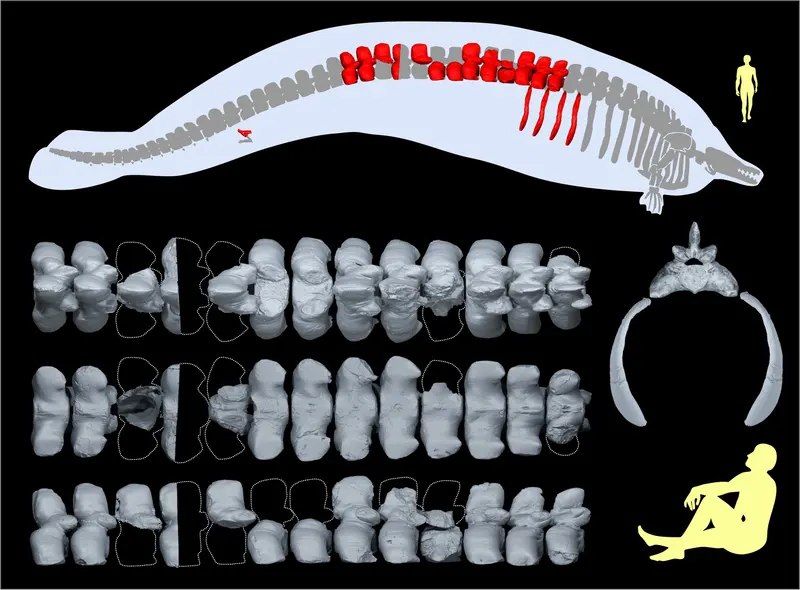
An artist’s impression of Perucetus colossus, a newly discovered ancient whale species that may now be the largest animal that ever existed
The blue whale has long been considered the largest animal to have ever existed, even dwarfing the biggest known dinosaurs. But now a new species threatens to steal the crown, and upends what we thought we knew about whale evolution.
In the Ica valley in Southern Peru, paleontologists discovered 13 vertebrae, four ribs and a hip bone that were absolutely gigantic. They belonged to a previously unknown species of ancient whale that lived about 39 million years ago, and the team named the creature Perucetus colossus.
By comparing the bones to modern species, the researchers were able to estimate the size and mass of the animal. It’s thought to have grown to about 20 m (65.6 ft) long and may have weighed as much as 340 tonnes – blue whales, meanwhile, top out at under 200 tonnes. Even with some margin for error, the blue whale has a lot of catching up to do to reclaim its title.

An illustration of Perucetus colossus, highlighting the bones that have been found, with human figures for scale
The bones of P. colossus were heavier and denser than those of modern whales, which would have acted like ballast for better buoyancy control in shallow, coastal waters. The team says this points to a fully aquatic lifestyle, unlike some early whale relatives that could still crawl out onto land for short stretches of time. That said, it did still have a pair of adorable little vestigial legs – relics from its landlubber ancestors.
The sheer size of P. colossus actually throws our understanding of whale evolution for a loop. It’s long been thought that whales grew to such massive sizes relatively recently – only in the last three million years or so. But the new find, suggesting peak body mass was reached almost 40 million years ago, changes the narrative.
Without a skull, it’s hard to determine what P. colossus ate, the team says. It could have fed on fish and crustaceans, or may have pioneered filter-feeding strategies that later baleen whales used to scoff down krill by the tonne. Finding more bones could help answer these questions, as well as give a better estimate of its size. Until then, the blue whale is on notice.
The research was published in the journal Nature. The team describes the work in the video below.
https://youtu.be/IDTZwnPSpU8
https://newatlas.com/biology/perucetus-colossus-largest-animal-ever-existed-blue-whale/